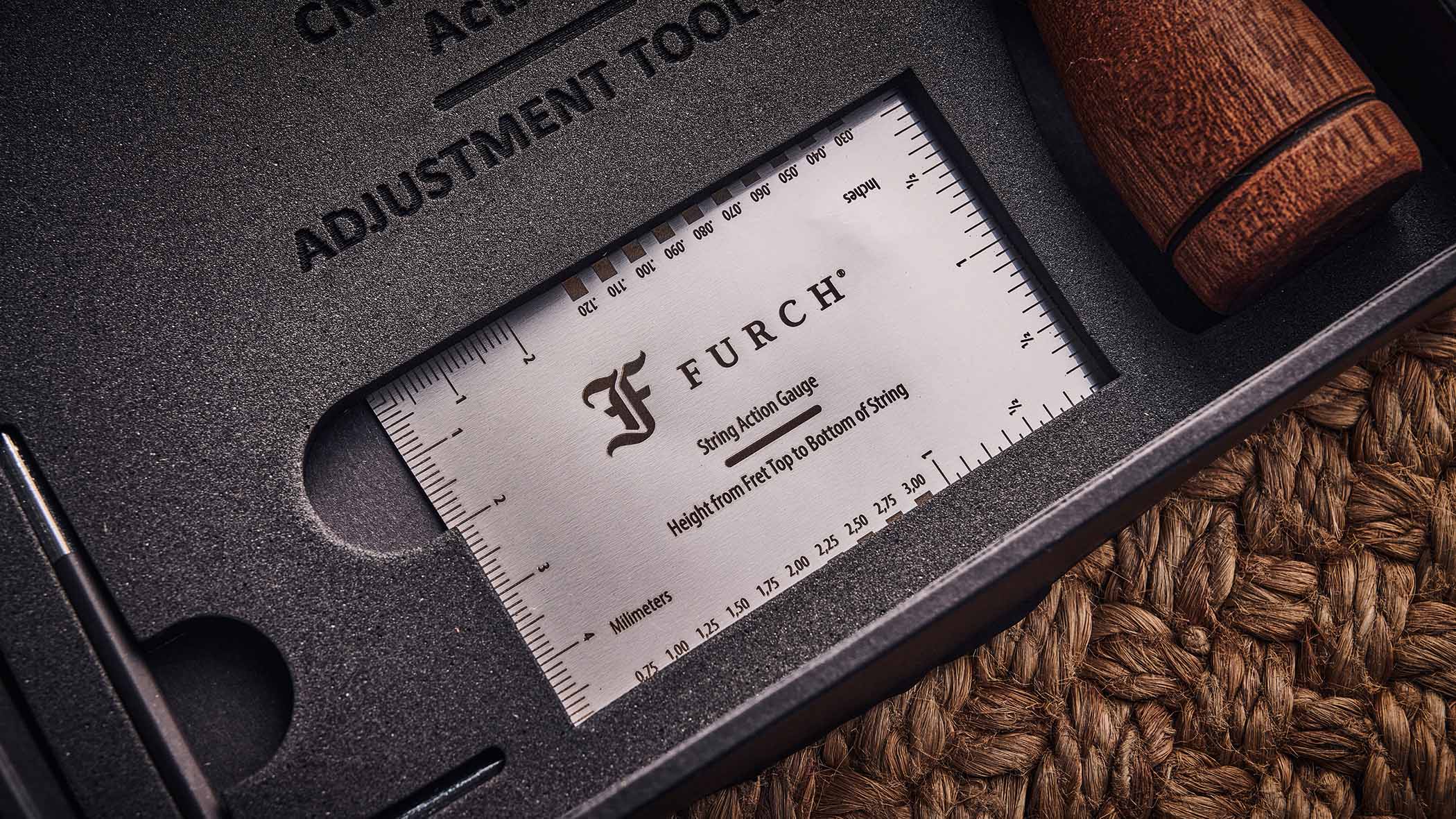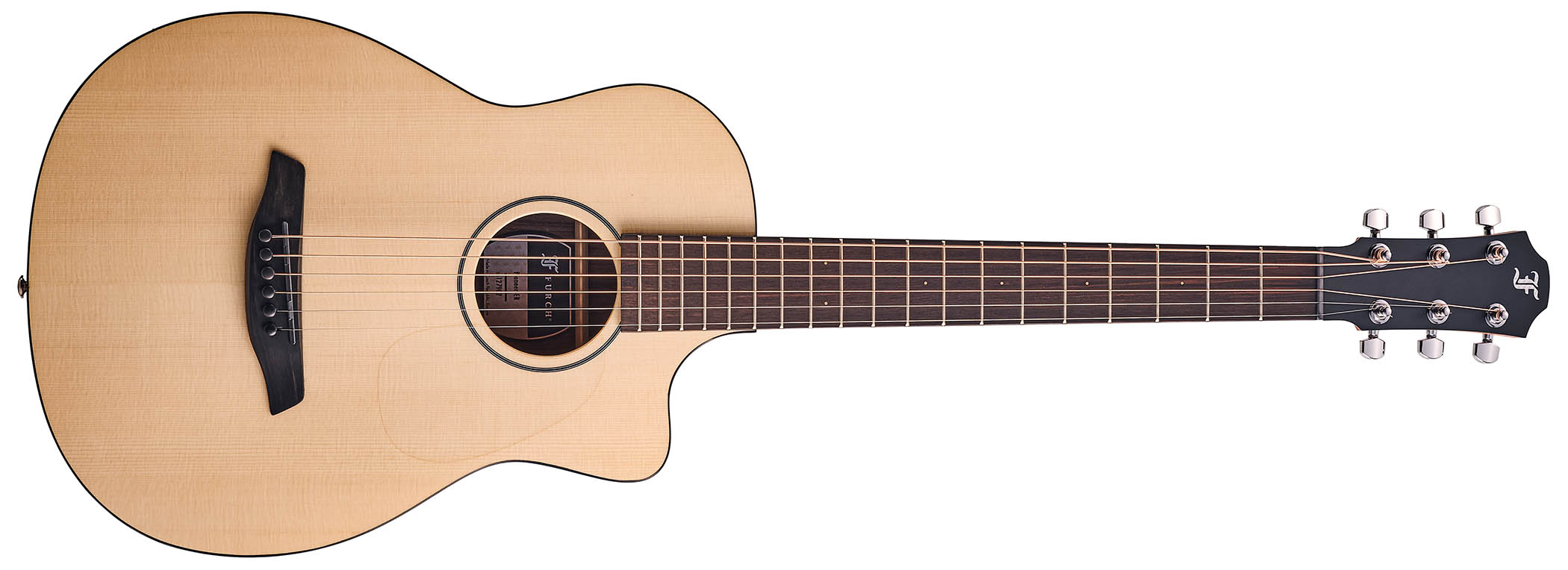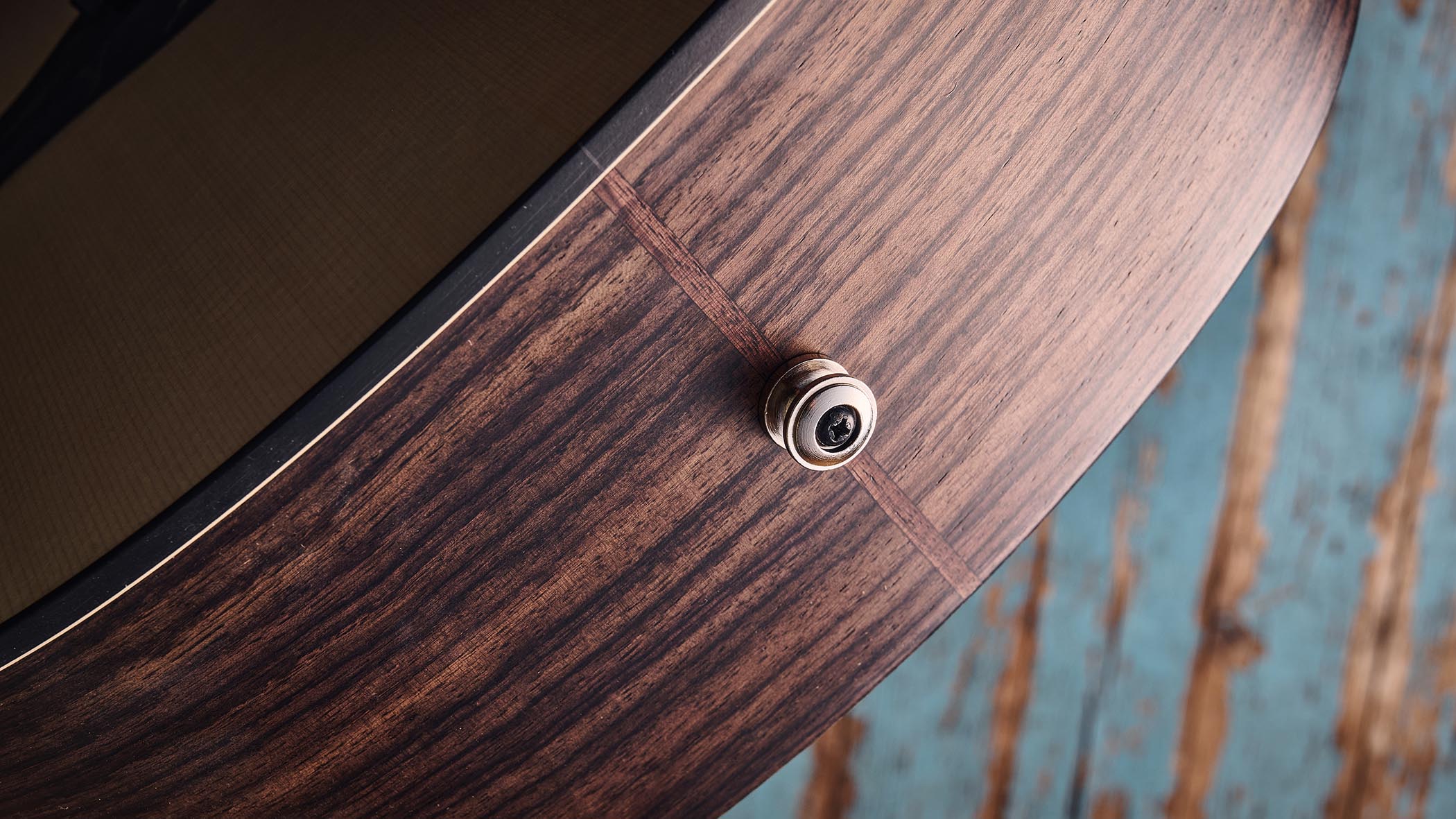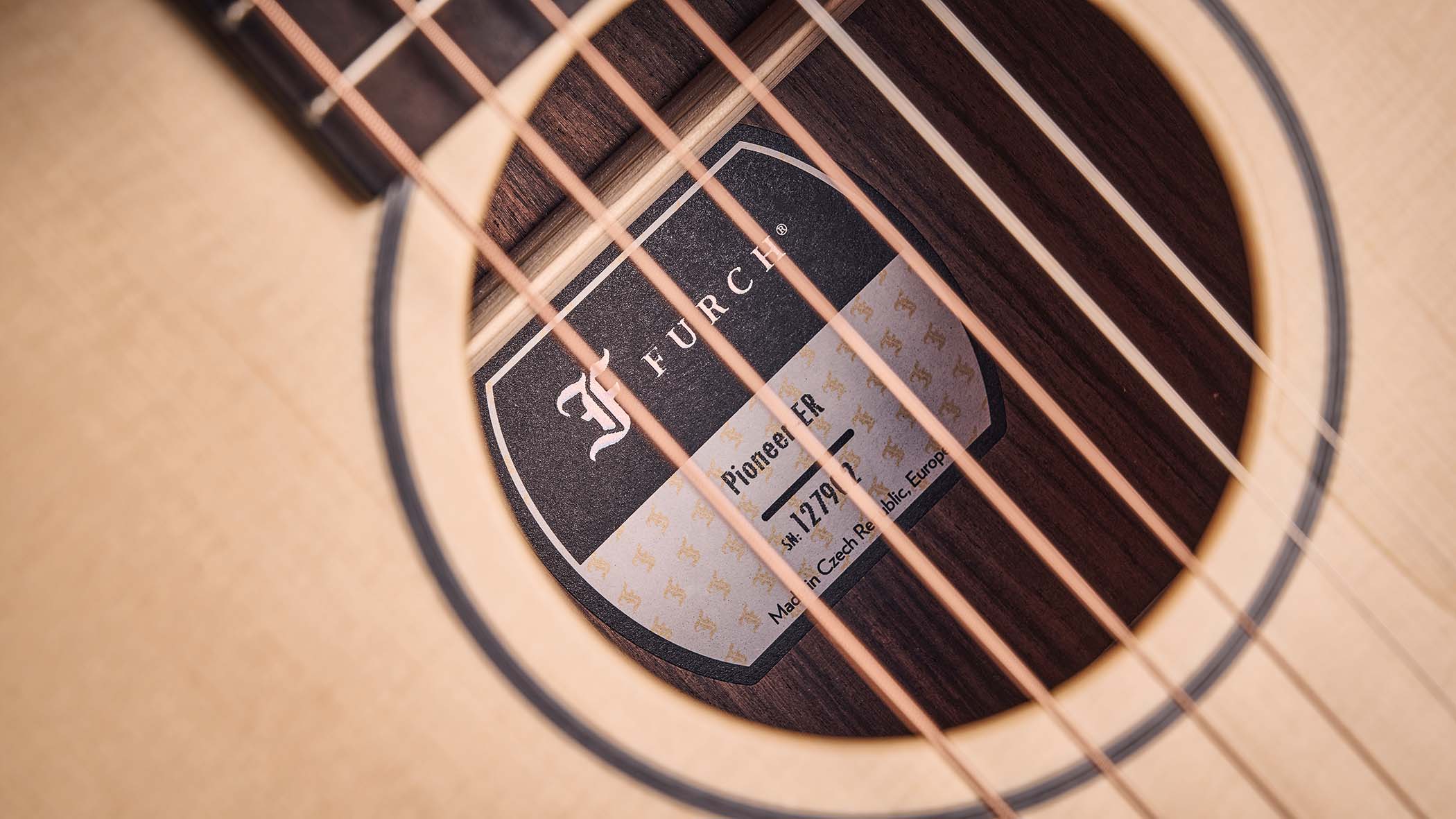Guitar World Verdict
We think paying that little bit extra is well worth paying for the sheer quality in terms of build, solid woods and that huge sound on display here. If you’re heading off on holiday any time soon and want a guitar-shaped companion with a good pedigree, look no further.
Pros
- +
Well built and superbly thought-through travel guitar.
- +
Easily adjustable.
- +
Sounds great.
Cons
- -
Slight neck heaviness and a learning curve with the adjusting tool.
You can trust Guitar World
What is it?
Last year, we reviewed Furch’s innovative Little Jane travel guitar, which came with a detachable neck that fitted inside the instrument’s body.
It also came with a diminutive gigbag meaning it was possible to stow the guitar away in an aircraft’s overhead locker and avoid the somewhat capricious attitude that some airlines have towards passengers travelling with guitars.
What made the Little Jane even more remarkable was that when you reassemble the guitar it stays in tune. We tested it and, sure enough, once the neck was reattached to the body, and with only the very slightest tweak, it was up to pitch and ready to play.
The guitar itself was a joy to spend time with, experiencing none of the tonal compromises inherent in some of the travel guitars that have ventured our way. At the time, we thought that it would be a great little instrument even without the detachable neck side of things. And that’s almost exactly what we have in the Pioneer-ER a.
But even here, Furch’s boffins have not rested on earlier laurels and the guitar comes with a device built in to combat the changes that sometimes happen when a guitar is exposed to variations in humidity or temperature levels.
According to Furch, along with a dual-action truss rod encased in a rigid carbon structure, “the system is further enhanced by a solid-wood expansion element that automatically adjusts the neck angle to maintain consistent string action over time. It minimises the need for costly, time-consuming neck resets and eliminates maintenance concerns.”

If you look at the diagram here (above right), you’ll see that the Furch CNR System Active comprises a block of wood that will expand or contract according to the ambient humidity level and automatically adjust the neck as it does so.
All the latest guitar news, interviews, lessons, reviews, deals and more, direct to your inbox!
A special tool to set your required action height, plus a measuring gauge, is supplied with the guitar. If this sounds like a lot of faff, then be reassured that it looks like a case of set-it-and-forget-it to us.
But we wouldn’t be doing a thorough job unless we took this system out for a test drive. Needless to say, we couldn’t simulate a change in humidity to see if the automatic side of the CNR System Active does its thing. But we could certainly engage the tool to see just how simple it is to make an adjustment to string height to enhance playability.

In actual fact, the Pioneer’s action was spot on when we first took it out of its gigbag, which means that it had survived the rigours of being transported from Furch’s Czech Republic workshops to the UK by various means. However, you may prefer a slightly higher or lower action to suit your playing style and so we brought the special tool into play.
If you’re thinking that you’ve seen this kind of thing before then, yes, it’s a little like Fender’s neck tilt system from the 1970s
Normally, an adjustment such as this would comprise a combination of a possible truss rod tweaking and the sanding down or replacing the guitar’s saddle, depending on whether you wanted to raise or lower the action. Here, you merely insert the tool through the strings – there’s no need to slacken them first – and mate the tool to the adjusting socket on the guitar’s neck block.
We have to admit that our initial attempt was a little ham-fisted from the point of view of inserting the tool, but experience is a great teacher and pretty soon we were able to achieve the desired result. Once the tool is connected, you merely turn the handle one way or the other – depending on whether you’re raising or lowering the action – and that’s it. Job done.
If you’re thinking that you’ve seen this kind of thing before then, yes, it’s a little like Fender’s neck tilt system from the 1970s, which is, of course, used on the much more contemporary Acoustasonic guitars.

If you’re based in the UK then it’s unlikely that you’ll need to engage the tool on anything like a regular basis. However, if you were looking at a busking adventure that would take you from Florida to Alaska at any point, further genning up might be advisable.
The other thing to note is Furch’s Booster Soundport, which consists of five slots cut into the upper bout of the guitar. Other makers have installed similar ports in the form of holes on their instruments, but here it looks more like a small grille.
Furch says: “This innovative feature reduces internal air pressure within the guitar’s body, allowing the top board to move more freely and produce a stronger, fuller sound with the same strumming effort.” Sounds logical to us.

Innovation aside, what exactly is on offer here? To begin with, we find a guitar with some travel-friendly dimensions inside a rugged and potentially roadworthy gigbag. The guitar measures 935mm (approximately 36 inches) from tip to toe with a body size that comes in at 325mm (12.7 inches) at its widest point and 430mm (16.9 inches) long – about the same as that of a Gibson Les Paul.
Our review sample has an Engelmann spruce top with Indian rosewood for the back and sides – hence the ER suffix in the guitar’s name – but if this particular cocktail doesn’t suit, then the Pioneer is available with other wood combos. While we’re here, it’s worth noting that Furch is very quick to point out that these are all solid woods, unlike many other mini acoustics in today’s marketplace.

The Pioneer’s neck is made from African mahogany, with an ebony ’board that has a flattish 400mm (15.7-inch) radius and microscopically small position markers. The body is bound in black and the top has an almost invisible transparent scratchplate and a very subtle rosette.
As is typical of Furch instruments we’ve seen in the past, the overall design is very pleasing to the eye and the open-pore satin feel to both body and neck is set to enhance the playing experience still further. Workmanship is first class throughout – and so the next thing is to hear what this little traveller has to say for itself.
Specs

- Price: €1,149 (approx $1,349/£1,019 inc gigbag)
- Origin: Czech Republic
- Type: Travel guitar
- Top: A-grade Engelmann spruce
- Back/Sides: Indian rosewood
- Max Rim Depth: 104mm
- Max Body Width: 325mm
- Neck: African mahogany
- Scale Length: 615mm (24.2”)
- Tuners: Furch chrome: gear ratio 1:18
- Nut/Width: Black Tusq/45mm
- Fingerboard: Ebony
- Frets: 19
- Bridge/Spacing: Ebony with Tusq saddle/55mm
- Electrics: n/a (see Options)
- Weight (kg/lb): 1.5/3.3
- Options: 43mm nut model available, LR Baggs EAS-VTC pickup (€194 upcharge)
- Range Options: Pioneer-CM a (cedar top, mahogany b/s €1,098), Pioneer-EM a (Engelmann spruce top, mahogany b/s €945), Pioneer-MM a (mahogany top and b/s €1,025)
- Left-Handers: Yes
- Finish: Open pore
- Contact: Furch Guitars
Playability and sounds

With all of the CNR System Active gubbins onboard, the Pioneer is prone to neck-dive when playing seated, but this is entirely manageable and something that you forget after only a very short time.
As we’ve said, the open-pore finish is suitably woody and wonderfully smooth in the hand. This is particularly noticeable on the neck where the fretting hand is free to travel without any of that resistance that you can occasionally find with a gloss finish.




But then there’s the sound. What surprised us was the depth of bass and midrange present here. Perhaps this is the science behind the soundport coming into play, but whatever the reason, it really does sound like you’re playing a much bigger-bodied instrument.
There’s certainly none of that boxiness that you find with smaller instruments, and there’s plenty of tone-rich volume to be had here, too.
Our little Pioneer didn’t come fitted with a pickup (Furch will fit an LR Baggs EAS-VTC for an upcharge), but we would imagine that if you chose to install one, and busking is your thing, then this would be a perfect travel companion once matched with a suitable battery-powered amp.
Verdict
Verdict: ★★★★½



As you can probably gather, we were mightily impressed with the Pioneer.
Everything here has been well thought through, from the rugged gigbag to the innovative climate-defying facilities and, most importantly, the sound.
We think paying that little bit extra is well worth paying for the sheer quality in terms of build, solid woods and that huge sound
Looking around on the internet the Pioneer-ER a seems to street around £900, which means it’s a costlier prospect than other small-bodied acoustics such as the Baby Taylor or Sheeran By Lowden.
Guitar World verdict: We think paying that little bit extra is well worth paying for the sheer quality in terms of build, solid woods and that huge sound on display here. If you’re heading off on holiday any time soon and want a guitar-shaped companion with a good pedigree, look no further.
Hands-on videos
Furch Guitars
Alamo Music Center

Cedar Rock Studio Guitar Gallery
- Best 3/4 acoustic guitars 2025: small-bodied, short scale sensations from Taylor, Martin, Fender and more
- This article first appeared in Guitarist. Subscribe and save.
With over 30 years’ experience writing for guitar magazines, including at one time occupying the role of editor for Guitarist and Guitar Techniques, David is also the best-selling author of a number of guitar books for Sanctuary Publishing, Music Sales, Mel Bay and Hal Leonard. As a player he has performed with blues sax legend Dick Heckstall-Smith, played rock ’n’ roll in Marty Wilde’s band, duetted with Martin Taylor and taken part in charity gigs backing Gary Moore, Bernie Marsden and Robbie McIntosh, among others. An avid composer of acoustic guitar instrumentals, he has released two acclaimed albums, Nocturnal and Arboretum.
You must confirm your public display name before commenting
Please logout and then login again, you will then be prompted to enter your display name.




